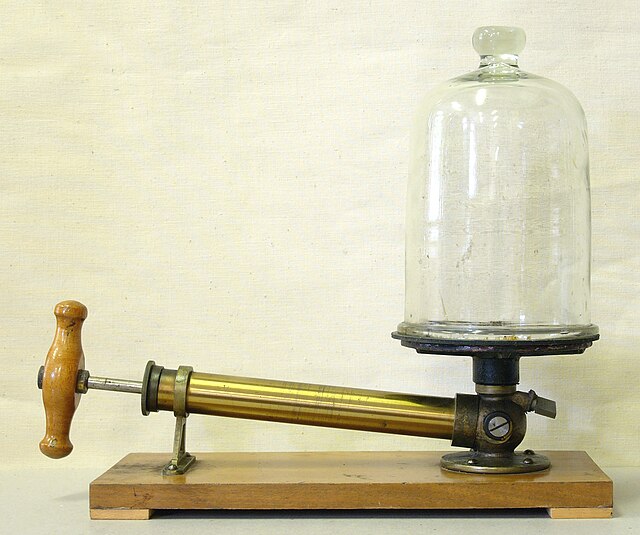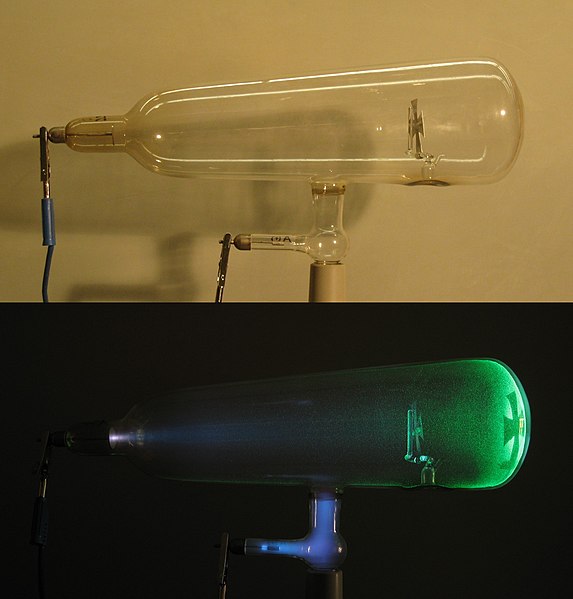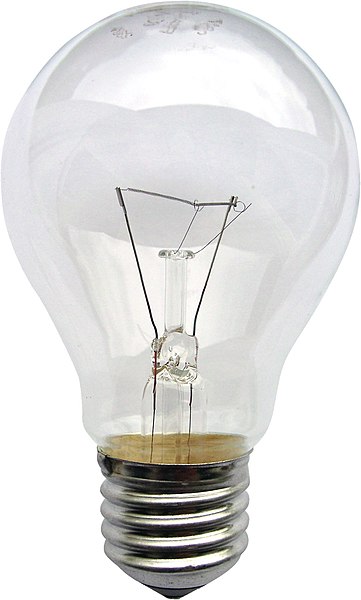The Magdeburg hemispheres are a pair of large copper hemispheres with mating rims that were used in a famous 1654 experiment to demonstrate the power of atmospheric pressure. When the rims were sealed with grease and the air was pumped out, the sphere contained a vacuum and could not be pulled apart by teams of horses. Once the valve was opened, air rushed in and the hemispheres were easily separated. The Magdeburg hemispheres were invented by German scientist and mayor of Magdeburg, Otto von Guericke, to demonstrate the air pump that he had invented and the concept of atmospheric pressure.
Gaspar Schott's sketch of Otto von Guericke's Magdeburg hemispheres experiment.
The original Magdeburg hemispheres and Guericke's vacuum pump in the Deutsches Museum, Munich, Germany
A vacuum is space devoid of matter. The word is derived from the Latin adjective vacuus meaning "vacant" or "void". An approximation to such vacuum is a region with a gaseous pressure much less than atmospheric pressure. Physicists often discuss ideal test results that would occur in a perfect vacuum, which they sometimes simply call "vacuum" or free space, and use the term partial vacuum to refer to an actual imperfect vacuum as one might have in a laboratory or in space. In engineering and applied physics on the other hand, vacuum refers to any space in which the pressure is considerably lower than atmospheric pressure. The Latin term in vacuo is used to describe an object that is surrounded by a vacuum.
Vacuum pump and bell jar for vacuum experiments, used in science education during the early 20th century, on display in the Schulhistorische Sammlung ('School Historical Museum'), Bremerhaven, Germany
The Crookes tube, used to discover and study cathode rays, was an evolution of the Geissler tube.
A glass McLeod gauge, drained of mercury
Light bulbs contain a partial vacuum, usually backfilled with argon, which protects the tungsten filament






